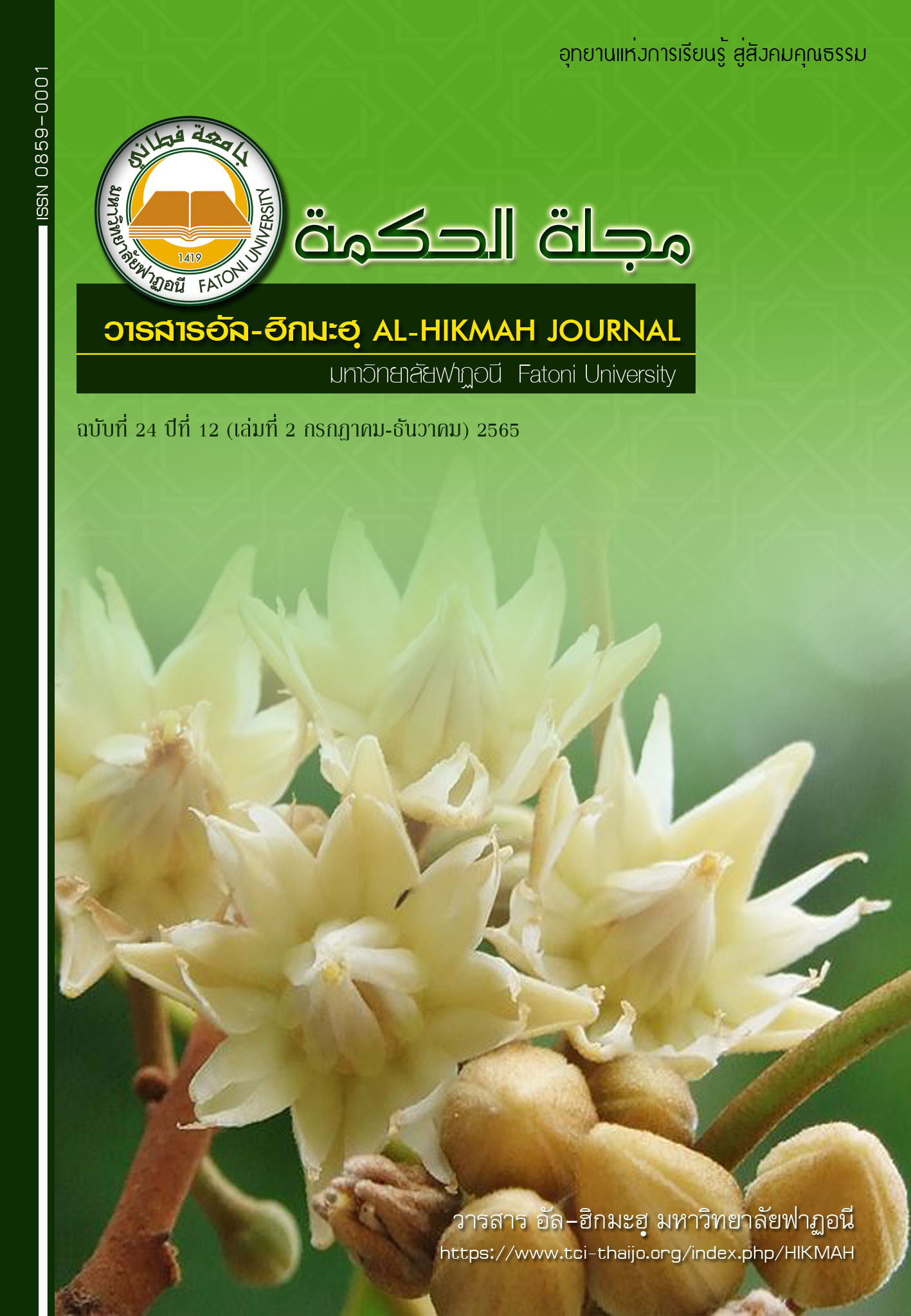Thai EFL Undergraduate Students’ Perceptions toward Learning English through Target Language Strategy
Abstract
The current study aims to investigate EFL undergraduate students’ perceptions toward learning English through target language strategy. The participants of this study were 20 participants at a university in Yala. The research instruments included questionnaire and semi-structured interview. The quantitative data from the questionnaire were analyzed for arithmetic mean and interpreted using descriptive analysis. The qualitative data from the semi-structured interview were analyzed using content analysis. The results showed that the participants had good perceptions toward learning English though target language (English) strategy (x̄ =3.77). When considering each domain, the results showed that the most highly rated domain was instructional medias (x̄ =4.19). The least rated domain was the teaching process (x̄ =3.28). The open-ended questions and semi-structured interview results showed that the students had mixed perceptions toward learning through target language. The students perceived that target language strategy was not only helpful for developing their English proficiency but also self-directed learning and self-responsibility since it offered them to be more self-dependence. However, some negative perceptions were also found. Some students pointed out that this teaching strategy was not appropriate for students those who have low English proficiency. The findings suggest that target language strategy can be implied to improve Thai EFL undergraduate students’ English proficiency with careful considerations of involving factors.
References
Arulselvi, E. (2011). Effect of instructional media in the learning of English grammar on the achievement of teacher training students at
Namakkal, district. Journal on English Language, 1(3), 80-87.
Bateman, B. E. (2007). Student Teachers’ Attitudes and Beliefs About Using the Target Language in the Classroom. Foreign Language
Annals, 41(1), 11-28.
Dearden, J. (2014). English as a medium of instruction–a growing global phenomenon. British Council. Retrieved on 23 February 2021
from http://www.British council. org/education/ihe/knowledgecentre/english-language-higher-education/reportenglish-medium-
instruction
Dickson, P. (1996). Using the target language: a view from the classroom. Slough: NFER.
Harmer, J. (1984). The Practice of English Language Teaching. London: Longman.
Horasan, S. (2014). Code-switching in EFL classrooms and the perceptions of the students and teachers. Journal of Language and
Linguistic Studies, 10, 31–45.
Ima, N. (2017). Thesis of Developing Instructional Media of Basic English Grammar Weblog for the First Year Students of Senior High
School 11 Makassar.
Jack, C. R., & Ricard S. (2002). Longman Dictionary of Language Teaching and Applied Linguistics, (Third Edition). London: Longman.
Krashen, S. (1982) Newmark's "Ignorance Hypothesis" and current second language acquisition theory. Unpublished manuscript.
Levine, G. S. (2003). Student and instructor beliefs and attitudes about target language use, first language use, and anxiety: Report of a
questionnaire study. Modern Language Journal, 87, 343–364.
Long, M., (1981). Input, interaction and second language acquisition. In Winitz, H. (Ed.), Native language and foreign acquisition (sic).
Annals of the New York Academy of Sciences, 379, 259– 278.
Pan, Y. (2010). The Use of L1 in the Foreign Language Classroom. Colombian Applied Linguistics, 12(2), 87-96.
Polio, C. G., & Duff, P. A. (1994). Teachers' language use in university foreign language classrooms: A qualitative analysis of English and
target language alternation. The Modern Language Journal, 78(3), 313-326.
Punthumasen, P. (2007). International Program for Teacher Education: An Approach to Tackling Problems of English Education in Thailand. The 11th UNESCO-APEID international conference. Retrieved from http://www.worldreform.com/pub/paperies13dec07.pdf.
Ratanapinyowong, P. Poopon, K. & Honsa, Jr.S. (2007). Problems and solutions in teaching and assessing English skills in Thai higher
education and the need for professional development. Voices of Asia 2007 Symposium, MARA University of Technology (UiTM),
Malaysia.
Sojisirikul, P. (2009). Problem-based learning and task-based learning approaches for English writing courses (Doctoral dissertation, Suranaree University of Technology). Retrieved from http://sutir.sut.ac.th:8080/sutir/bitstream/123456789/3729/2/Fulltext .pdf.
Swain, M. (1995). Three functions of output in second language learning. In Cook, G. & Seidlhofer, B. (Eds.), Principle and practice in
applied linguistics: Studies in honour of H. G. Widdowson. Oxford, England: Oxford University Press.
Turnbull, M., & Arnett, K. (2002). Teachers’ uses of the target and first languages in second and foreign language classrooms. Annual
review of applied linguistics, 22, 204-218.
Vygotsky, L. (1986). Thought and Language. Cambridge, MS: The Massachusetts Institute of Technology.
Walsh, S. (2002). Construction or Obstruction: Teacher Talk and Learner Involvement in the EFL Classroom. Language Teaching Research,
(1), 3-23.
Wiriyachitra, A. (2002). English language teaching and learning in Thailand in this decade. Thai TESOL Focus, 15(1), 4-9.
Downloads
Published
How to Cite
Issue
Section
License
Copyright (c) 2022 Al-HIKMAH Journal

This work is licensed under a Creative Commons Attribution-NonCommercial-NoDerivatives 4.0 International License.



